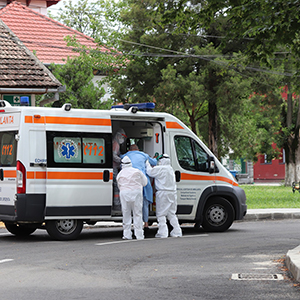Usefulness of CURB-65, pneumonia severity index and MuLBSTA in predicting COVID-19 mortality

All claims expressed in this article are solely those of the authors and do not necessarily represent those of their affiliated organizations, or those of the publisher, the editors and the reviewers. Any product that may be evaluated in this article or claim that may be made by its manufacturer is not guaranteed or endorsed by the publisher.
Authors
The aim of our study is to evaluate the accuracy of CURB-65 and Pneumonia Severity Index (PSI), the most widely used scores for community acquired pneumonia, and MuLBSTA, a viral pneumonia score, in predicting 28-day mortality in Coronavirus Disease 2019 (COVID-19) pneumonia.We retrospectively collected clinical data of consecutive patients with laboratory-confirmed COVID-19 pneumonia admitted at Papa Giovanni XXIII Hospital from February 23rd to March 14th, 2020. We calculated at Emergency Department (ED) presentation CURB-65, PSI and MuLBSTA and we compared their performances in discriminating between survivors and non-survivors at 28 days. Among 431 hospitalized patients, the majority presented with hypoxic respiratory failure: median (interquartile range, IQR) PaO2/FiO2 ratio at admission was 228.6 (142.0-278.1). In the first 24 hours, 111 (27%) patients were administered low-flow oxygen cannula, 50 (12%) Venturi Mask, 95 (23%) non-rebreather mask, 106 (26%) non-invasive ventilation, 12 (3%) mechanical ventilation and 41 (9%) were not administered oxygen therapy. Mortality rate at 28-day was 35% (150/431). Between survivors and non-survivors, median (IQR) scores were, respectively, 1.0 (1.0-2.0) and 2.0 (2.0-3.0) for CURB-65 (p<0.001); 90.5 (76.0-105.5) and 115.0 (100.0-129.0) for PSI (p<0.001); 7.0 (5.0-10.0) and 11.0 (9.0-13.0) for MuLBSTA (p<0.001). Areas under the receiver operating characteristic curve (AUCs) for each score were, respectively, 0.725 (0.662-0.787), 0.776 (0.693-0.859) and 0.743 (0.680-0.806) (p>0,05). PSI and MuLBSTA did not show a better performance when compared to CURB-65. Although CURB-65, PSI and MuLBSTA scores are useful tools to discriminate between survivors and non-survivors in COVID-19 pneumonia, their diagnostic accuracy in discriminating 28-day mortality in COVID-19 pneumonia is moderate, as confirmed by AUCs <0.80, and there is a potential underestimation of disease severity in the low-risk classes. For this reason, they should not be recommended in ED to decide between inpatient and outpatient management in patients affected by COVID-19 pneumonia.
How to Cite

This work is licensed under a Creative Commons Attribution-NonCommercial 4.0 International License.






